Bodies on the Edge
Ximena Garnica and Shige Moriya’s Becoming Pentalogy
Colombian-born Ximena Garnica and Japanese-born Shige Moriya are a multidisciplinary duo at the helm of LEIMAY ensemble. Together they have been developing LUDUS, an ongoing practice that combines the ensemble’s physical conditioning, visual art craft, aesthetics, and philosophies while providing another point of access to their creations and process. Since 2013, they have embarked on creating a five-part series under the common title Becoming. Currently at the halfway point with their pentalogy, they premiered the third installment in the cycle, Frantic Beauty, at the Brooklyn Academy of Music (BAM) in September 2017. After viewing the opening night performance of the new production, I met with Ximena and Shige at the BAM Fisher space to discuss their sources, methodology, and evolution of the current body of work.
Ivan Talijancic: Can you retrace your steps to the origin of the project Becoming? What was your impetus to create a five-part body of work?
Ximena Garnica: We started with Floating Point Waves, the solo I performed as part of HERE Art Center's HARP residency, which is a three-year program. After that, we wanted to develop the work with an ensemble, really develop the connection between space, body, time, and light, and we needed to do it through the work itself. It needed to be research that had a practical aspect to it, but also a celebration—a moment where we shared it with the audience. I decided it would be a pentalogy because I thought: "This is going to take us our entire lives!" It seems to be parallel to developing our relationship, building the ensemble, and the entire infrastructure around our work.
The work really revolves around questions of being. These questions sometimes feel very philosophical—"I think, therefore I am," for instance. Is that the only way we can exist—by thinking? What are the alternatives? Also, Shige is Japanese, and I am Colombian. Because of constant tension between the two of us—stemming from issues of cultural identity, language, and communication—these questions become our daily life. Growing up in a monotheistic culture, God is at the center of everything and nature just in the periphery. But then, you have a culture like Shintoism, where the trees and nature are the shrine. We are really approaching this work from that larger perspective, in which all these beings have to coexist, and the human is just one of them. Personally, I come from a culture that has been colonized, our indigenous people had been stripped of many rituals, of communication with plants and animals. I think there is a feeling within each and every human, of something having been ripped out of us on a very deep level. So, all of these dynamics are always present in our work.
‘Once you realize that your senses have been culturized to appreciate things a certain way, you also realize how flexible they are and how much they can be manipulated.’
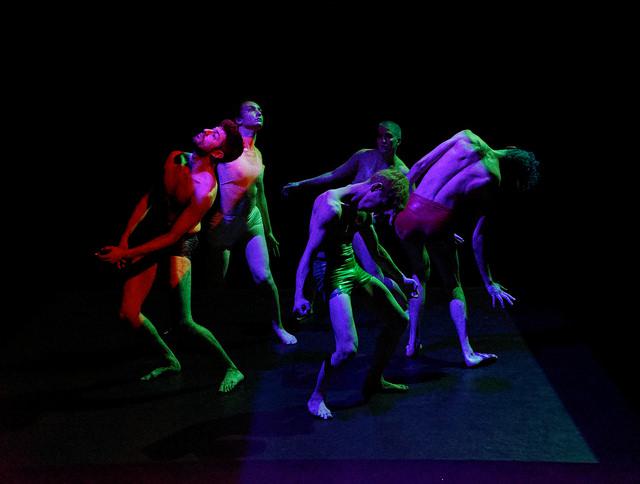
Then there is a cultural dimension of our interpersonal dynamic. Our ears are tuned to certain sounds, our tongues are tuned to certain flavors, our eyes are tuned to see things differently—for instance, while many people appreciate symmetry, we are actually looking for the beauty in asymmetry. What I mean by this is, once you realize that your senses have been culturized to appreciate things a certain way, you also realize how flexible they are and how much they can be manipulated. What we are questioning is whether there is a possibility for us to expand our social beings in order to find a connection with each other and with the world.
Ivan: Can you trace your way through the pentalogy and talk briefly about your trajectory, starting with Becoming—Corpus, to Borders, and now, Frantic Beauty?
Shige Moriya: Becoming, for me, is like a laser beam. Becoming—Corpus was about that moment of energy converging towards a single point. It took us five years to put it together. Continuing with that analogy, Borders represented all that great energy—bodies, images, sounds—coming to a single place, like a laser beam ready to emerge. And, with the current work, Frantic Beauty, that energy finally burst out.
Ivan: The laser pierced through the border! And what about the fourth installment?
Ximena: It's hard to tell, at this point, because this work is so parallel to our relationship and all that happens with the group we are creating the work with.
In Becoming—Corpus, we were working with the idea of these ambiguous bodies striving to become something—somebody. Then Borders was really dealing with that boundary—as Shige said, all this energy comes together, but now the question is: where does it begin and where does it end? What are the outlines of one’s skin, where do they finish and how movable are they? Sometimes we need those borders, but maybe they need to be permeable—or, sometimes they need to be opaque, translucent, or transparent. Now, in Frantic Beauty, we're investigating what is both outside and inside that border, what are the demands that have been put on us, and how we are resisting that.
Obviously, there is an evolution—there are things that we were able to achieve with Frantic Beauty that we couldn't have done in Becoming—Corpus, because the dancers weren't there yet with their bodies. We continue to dig deeper, for instance, exploring the possibilities with language—with the voice, I should say—and discovering what aesthetic principles we are navigating with. In a way, we have to do each piece in order for the next one to reveal itself.
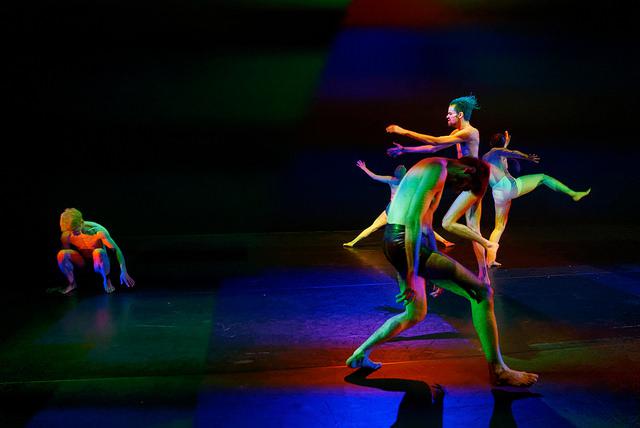
Ivan: Getting on a more granular level with Frantic Beauty: choreographically, I feel that you are negotiating two distinct modalities, one which is concerned with stillness and flow, and another that is highly kinetic, having a kind of explosive, raw energy. Can you talk about these opposing modalities and how they interface with each other?
Ximena: I don’t think we are necessarily exploring slowness versus high physicality. We start with a human body, and we try to hack it to move from a place from which it is not used to moving. We might ask the body to imagine that it has no bones, or that its skin has a different texture, which makes that body start changing and different dynamics appear. At times, I bring the dancers into a situation where there is just so much that they need to process that, automatically, the body slows down—but it slows down as a result of dealing with a multitude of impulses. Conversely, I might ask them to imagine what it means to disappear. So, the resulting rhythm happens as a result of body's trying to be in a different state. We work with our performers to create the condition of an ambiguous body, in the sense that it simultaneously embodies so many contrasting tensions, resulting in endless possibilities of movement.
Shige: Just like in real life, in order to begin to comprehend our existence, we need to be aware of its limits. For example, when I try to think of the most extreme heat possible, I imagine it to be the moment of the Big Bang. And the extreme cold would be the absolute zero, the place of zero movement. We cannot exist in either of those places, but we need to be aware of them. So then, the room temperature, we could say, is the place of neutrality—even though, in English, that is not the best word to describe it.
Ivan: We also live in times where "neutral" can have negative connotations.
Shige: Yes, and yet, if you are in neutral position, you can go anywhere right away—it is more like a state of alertness. It is important to be aware of the limitations, but know that they are not set—you can expand or shrink them.
Ivan: Your tightly-knit collaboration entails the creation of densely visual environments—how do you work together to achieve what we end up seeing on the stage?
Shige: Sometimes it is a collision, other times it is magic.
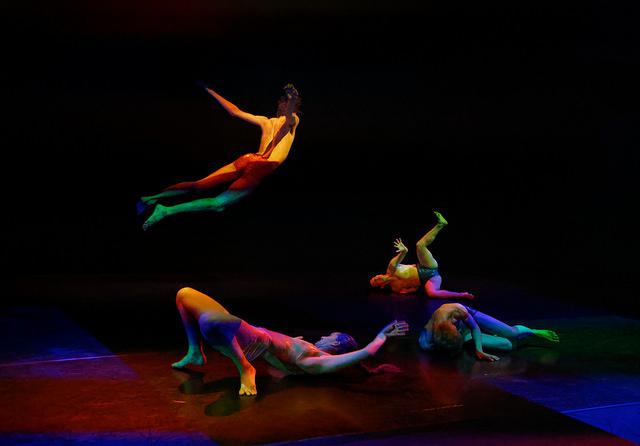
‘If we are questioning the perpetual hierarchy of the mind over the body, then we also have to question how our minds are being used when we make the work.’
Ximena: There is no single way of getting there. Our boundaries are very blurred—I wouldn't say: Shige is designing, and I'm choreographing. Shige is quite involved in the development of LUDUS, the conditioning of the body, and the training. He is often in the studio when we are doing workshops and physical research. He is also present in most of the rehearsals because he is involved in the overall choreography—not just the bodies. Likewise, I understand certain elements he is working with, like the type of imagery, or light sources. This mutual understanding, and acknowledgment of the sources makes it very easy for us to think on an integrated level. Usually, we don't have to talk about any of the elements serving anything—the things are just are what they are. They're not trying to create certain meaning, metaphor or signifier. Only subconsciously, perhaps.
Mostly, we are just creating the conditions to allow this to happen. For example, we know that we need four intensives throughout a year in order to create work. We take everybody out of town, we work and we cook together. If we are questioning our way of existence as social beings, then we have to question how we do things and what is the guiding force for those things we do. And if we are questioning the perpetual hierarchy of the mind over the body, then we also have to question how our minds are being used when we make the work.
Shige: In Japanese, there is a word, iki-ga-au—iki means “breathing” and ga-au means “feet.” It’s like what happens when an old couple finishes each other sentences.
Ximena: When we are working with the dancers, one of the first things we introduce them to is the Japanese concept of ma—think of the spaces between what you're thinking and what you're saying; or where you are standing in relationship with the others; or the sounds in the space in relationship with the sound of our voices. It takes a great deal of de-conditioning in order for new conditions to appear.
Also, we do better when the people we are working with are very strong-minded. We are not looking for followers—there are a lot of leaders in this group, in different ways. There are some quiet leaders and also loud ones. It is about creating connections so that there is always not just me Shige and I, thinking like that old couple, but also trying to cultivate that dynamic within the dancers themselves.
Ivan: In Frantic Beauty, I observed what felt like a new dimension in your work—the spoken part. Can you tell me how the vocal element evolved into the work?
Ximena: In Frantic Beauty, everybody wrote their personal text, it is an invented language. Some dancers had to memorize somebody else's text, and it was so difficult because it had no cognitive meaning. It's very hard to create any associations, it has to be just pure sounds and vocalizations.
Becoming—Corpus actually had a great deal of voice work, but it wasn't audible—we had taken the sound out. Of course, the voice is part of our bodies and we are researching the body, so it's only natural for it to be part of our research. One of my masters, Akira Kasai, had spent a great deal of time in Germany, working with eurythmy—exploring the voice's energetic potential. And the source of that energy is different from the source of physical energy. So that is where the seed of the idea came from. Our research of phonemes and sounds has been ongoing. Initially, it concerned how the body can be moved by the voice, and then, little by little, these sounds were permeated with a meaning—but it is different than language, as it comes from a non-cognitive place.
Ivan: So, you're not necessarily parsing it for meaning.
Ximena: At the end of the day, there is meaning attached to it. An audience member made a remark saying that, during the show, they experienced that feeling of being in a foreign country, where you may see somebody in a state of excitement or someone who is in distress and you don't know what is really happening, but you feel it. Perhaps it is like empathy for what one cannot understand but can sense. We live in a culture where it's almost expected to have all these details in order to be convinced that we feel something. With this vocal work, we are trying to circumvent that, to get you to experience something in a direct, visceral way.

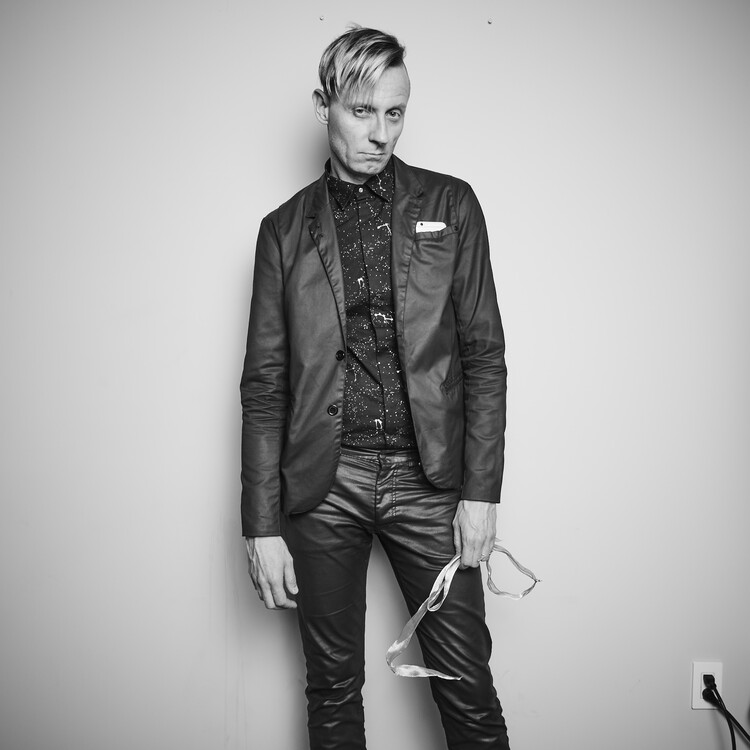




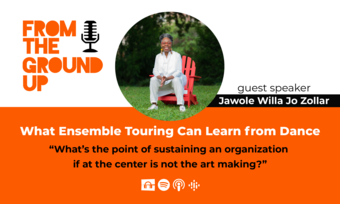


Comments
The article is just the start of the conversation—we want to know what you think about this subject, too! HowlRound is a space for knowledge-sharing, and we welcome spirited, thoughtful, and on-topic dialogue. Find our full comments policy here